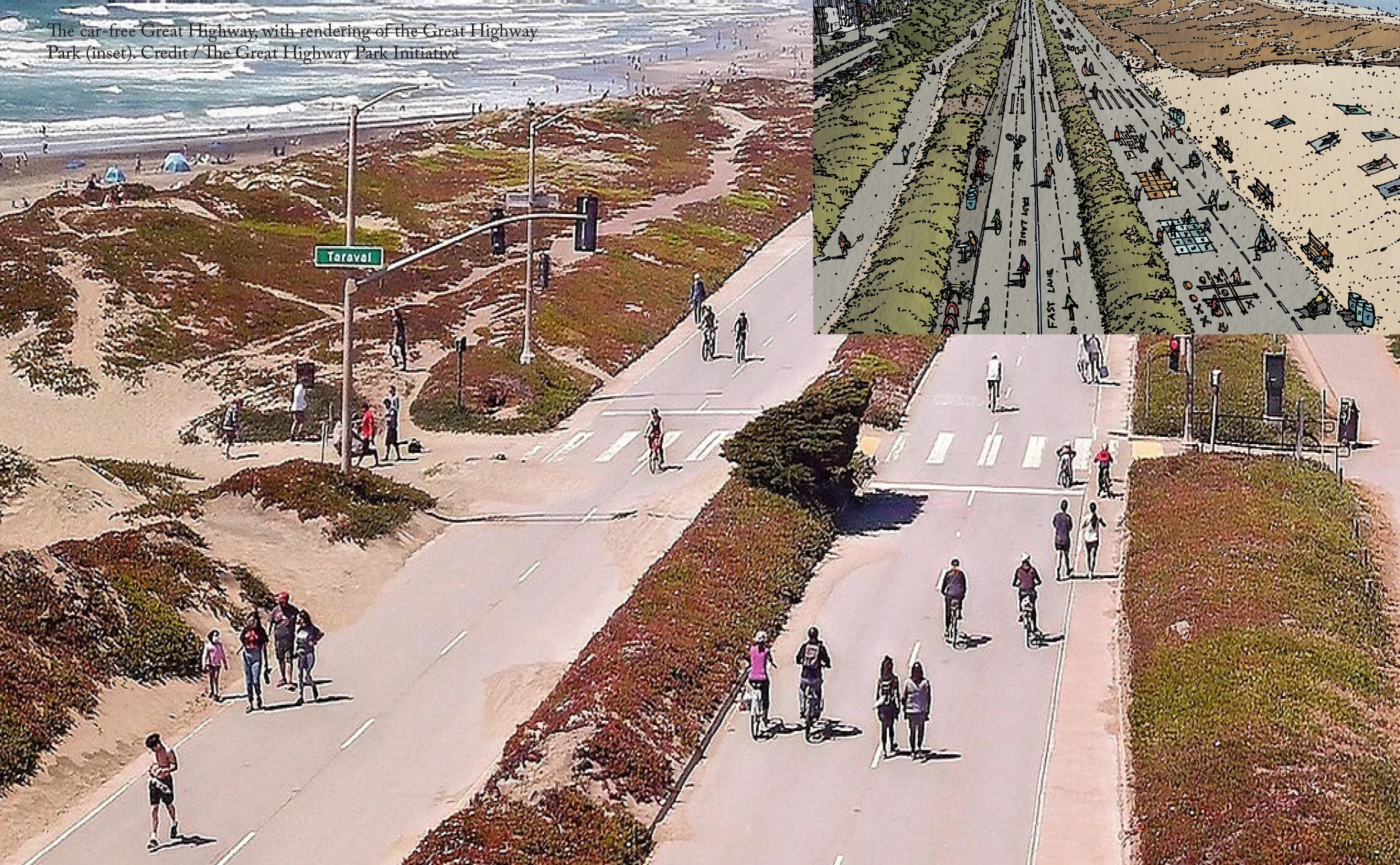History and Context
The Great Highway may lack the Interstate designation that many other of the highways in this report carry, but it still exhibits similar qualities: limited access, speed as a priority, and a barrier to access. But all of this changed in April 2020, when the road became a popular car-free slow street to facilitate social distancing. As the city debates whether or not to reopen the Great Highway to traffic, some residents wonder if it would be better to keep it closed permanently.
At the start of the COVID-19 pandemic, people began to reconsider their relationship to transportation. With non-essential businesses closed and stay-at-home orders in place, traffic levels plummeted overnight. But even prior to the pandemic, San Francisco’s Great Highway was already closed. The 3.5 mile-long commuter road sits adjacent to the dunes along the Pacific coast and every time it’s overwhelmed by sand or erosion, it is forced to close -- sometimes for as much as 30% of the year. So when the San Francisco Municipal Transportation Agency (SFMTA) started identifying potential car-free streets to enable social distancing, the Great Highway became an obvious choice.
As a pedestrian-only space, the Great Highway has achieved notable success. SFMTA collected data on the street’s usage from September-November 2020 (i.e. the offseason) and found an average of 6,800 bicyclists and pedestrians per weekend day. In essence, the street has become a flexible public space where some people still use it for transportation (albeit on bicycle), others recreate, and it has even served as a site of Black Lives Matter rallies and a march against Asian American and Pacific Islander hate.
Proposal
All this has led to a debate about the Great Highway’s future. Given its popularity without cars, should it stay that way permanently? The members of the Great Highway Park Initiative think so. The group has started working with community members and the relevant San Francisco agencies to outline a plan to keep the street pedestrian-only. They’ve identified four key pillars that will make this possible: reduce traffic, safer streets, improve the park, and inclusive access.
One of the key components of their plan is to reduce the number of cars driving through the Sunset district by introducing traffic calming measures. There are other north-south routes built for commuting, but drivers opt to travel through the neighborhood because there are few controls on speed. For instance, on the Lower Great Highway (the street parallel to the Great Highway), seven out of fifteen intersections had no north-south stop signs at the outset of the closure. Since then, dozens of speed bumps, stop signs, and other traffic calming measures have been added to help keep neighborhood streets safe.

The Great Highway Park Initiative also advocates for a few simple and inexpensive changes that would vastly improve the Great Highway as a park/bikeway. The addition of basic amenities, such as water fountains, trash and recycling bins, and places to safely lock bicycles could drastically improve the usability of the park. Access to the park also needs to be inclusive, regardless of how people are able to get there. The initiative wants the city to increase transportation options so everyone can enjoy the park, but also recognizes that, for some, it will only be accessible by car and parking needs to be considered for both visitors and current residents.
Because of the park’s popularity, the SFMTA has initiated a study to explore the long-term future of the Great Highway and wants to ground it in deep community engagement. Once completed, the city could act quickly as the City’s Recreation and Parks department already owns the street and its right-of-way, even if it falls under the jurisdiction of several different agencies. Meanwhile, thousands of visitors each day will continue to enjoy the Great Highway as a park and demonstrate the need for this unique community space.


















